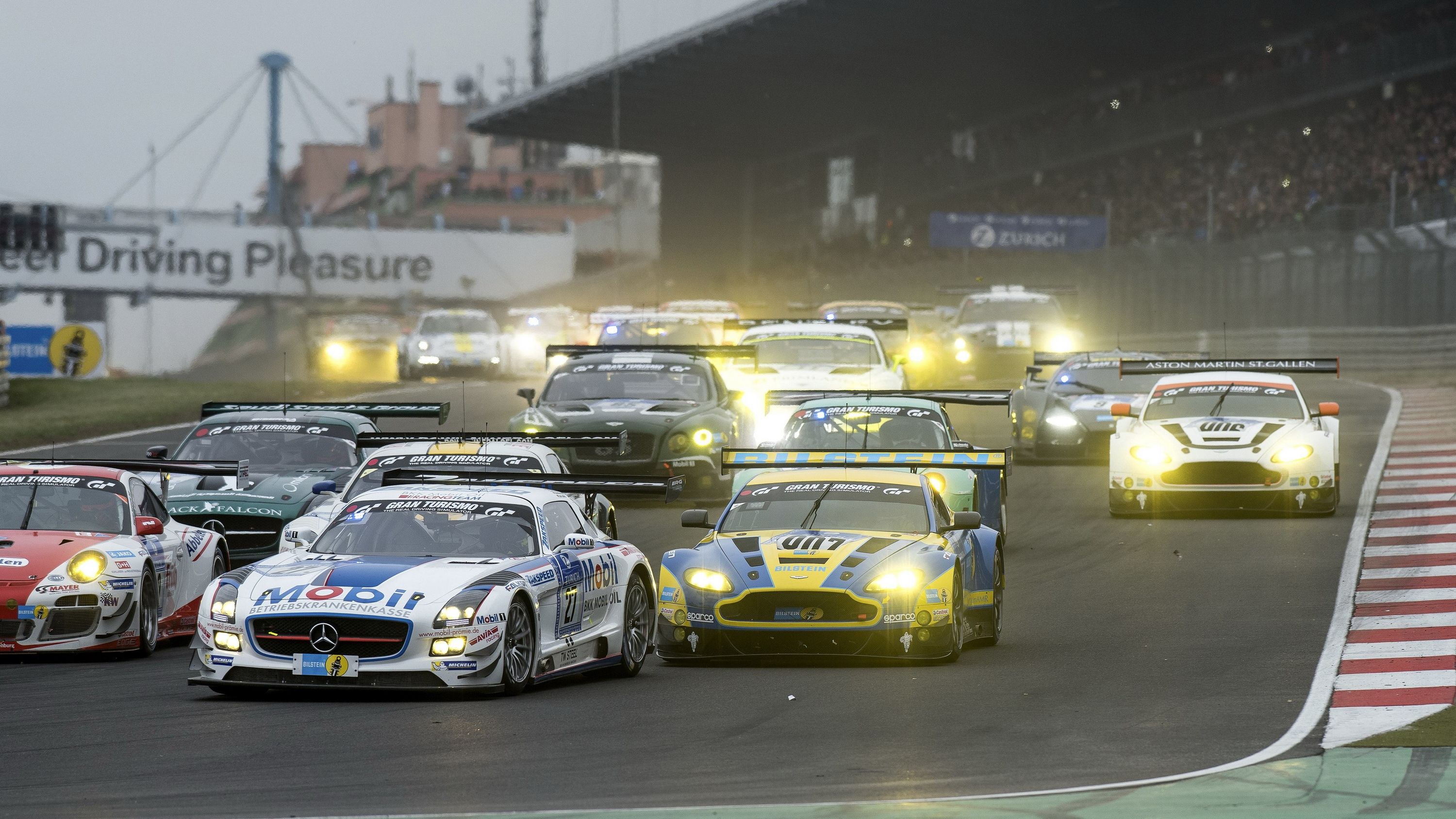Back in August, the Nurburgring announced that the speed limits introduced after a Nissan GT-R GT3 crashed during a VLN race, resulting in a spectator fatality, will be removed in 2016. The Germans also announced that the circuit will receive multiple changes, including the removal of five bumpers around Flugplatz, to improve safety. Four months have passed and the German Motor Sport Association (DMSB) wants to also reduce the engine power of all GT3 cars.
According to Motorsport.com, engine output in GT3 race cars->ke148 with be reduced by 10 percent, while new aerodynamic regulations will introduce higher ride heights for all competitors. In addition, tire manufacturers will be prohibited from supplying “extreme” (experimental) tire compounds starting in 2016 and will have to register at DMSB before any Nurburgring event.
"Manufacturers and most suppliers now understand that they have to do their part in order for the cars to not go faster by several seconds each year," said Hans-Joachim Stuck, racing legend and head of DMSB. "The terrible crash at the beginning of the 2015 season was a wake-up call for all of us. Suddenly, we saw that we had reached a certain limit," he added.
In late March 2015, one spectator at the VLN endurance race at the Nurburgring died after a GT3-spec Nissan GT-R->ke1592 went airborne at the Flugplatz section of the track and crashed through the safety fence and into a row of spectators. A ban on GT3 cars was immediately set, but lifted a couple of weeks later when the track introduced speed limits before Flugplatz, Schwedenkreuz, and Antoniusbuche, as well as on the Dottinger Hohe straight.
Continue reading for the full story.
Why it matters
Not having speed limits on the iconic Nurburgring track is great news, but it all comes at a cost. Just like in Formula One,->ke190 improving safety on the 'Ring will eventually make the track less spectacular, especially without the bumpers on the Flugplatz section. What worries me the most is that the DMSB will now regulate output for race cars as well. A 10-percent horsepower reduction doesn't sound all that bad considering race teams have plenty of tricks up their sleeves to make cars quicker, but I can't help wonder what will happen in the future.
The Nurburgring is one of the most dangerous tracks in the world (it's called the "Green Hell" for a reason) and smoothing out a few bumps and cutting horsepower won't make much of a difference in my opinion. It sounds cynical, but racing is and will always be a dangerous sport, no matter how many safety regulations are enforced. Sure, it's been more than two decades since Formula One has seen an on-track fatality, but we've seen plenty of crashes that resulted in serious injuries. Less than six months ago we lost Jules Bianchi, who died following injuries he suffered at Suzuka in October 2014. Hopefully there will be no more fatalities at the 'Ring and the DMSB will find ways to improve safety without killing the sport.
Nurburgring Nordschleife
The current Nurburgring Nordschleife is 12.93 miles long and consists of 154 turns, and more than 1,000 feet of elevation change from its lowest to highest points. The loop was last revised in 1983, when its length was shortened from 14.18 miles. The circuit is being used for various racing events and as a testing area by manufacturers. The complex also hosts open days, during which amateur drivers can test their skills and cars.

